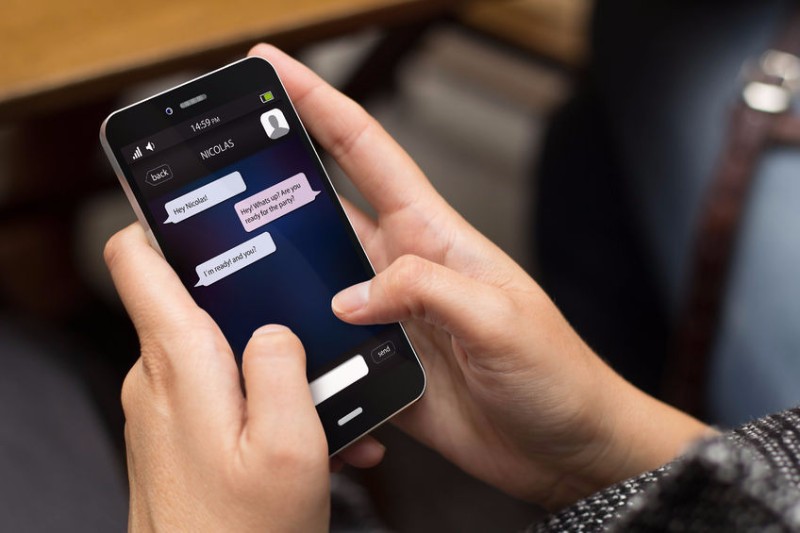
JTB Tourism Research & Consulting recently conducted a survey on relations between lifestyle changes and spread of new technology-based services to know how digitalization has changed travelers’ behaviors and values. The survey targeted 18 to 79 years old living in Tokyo, Nagoya and Osaka areas, who had experienced overnight travels in the past year.
The survey results show that the biggest change of travel style through digitalization is ‘information search in traveling’ (40.5%), while travelers who bring paper guidebooks reduces compared to the survey three years ago. In booking or purchase scenes, big changes in comparison with three years ago are found in ‘booking on smart phone (33.2%),’ ‘purchasing travel products online (28.9%)’ and booking online in doing something else (13.9%).’ Reductions are found in purchasing travel products at a real shop and over phone.
In terms of travel style, growths of travelers are found in ‘purchasing transportation and accommodation separately by myself (24%)’ and ‘last-minute travel (15.6%).’
The graph below shows changes of travel styles (in comparison with three years ago):
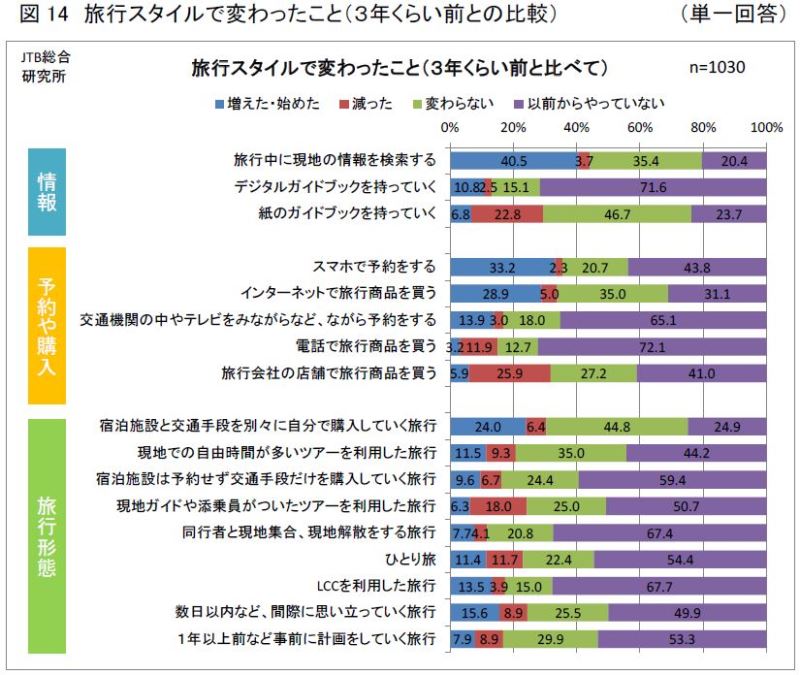
The survey results also illustrate that the very first tool to use for travel planning is ‘search engine 24.4% for domestic travel, 11.5% for overseas travel),’ followed by ‘favorite hotel booking site.’
The graph below shows favorite places to purchase travel products:
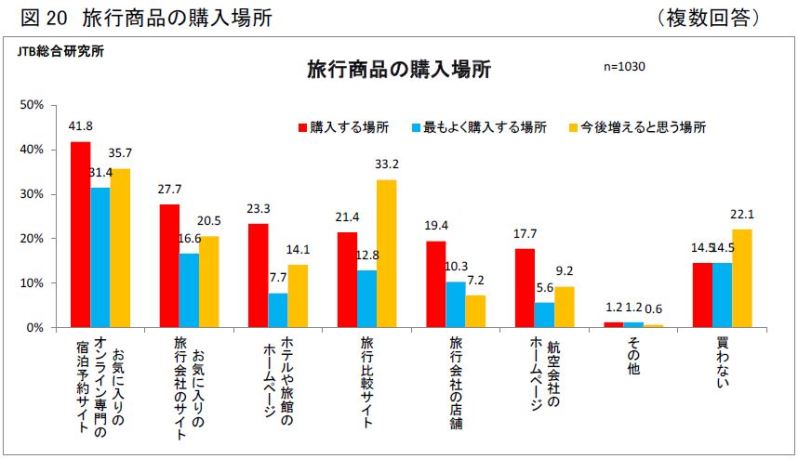
Asked about reasons for not going to a real retail shop, 50.9% answer that they are fully satisfied with online booking, and other major answers are ‘bother to go to a real shop (44.4%),’ ‘no time to go to a real shop within its business hours (15.3%’ or ‘no real shop in an easy-to-go place (10.9%).’
Interestingly, 27.2% has been a real retail shop to ask about a travel product available online before booking. The reasons are ‘to know the detailed contents (12.6%),’ ‘complicated to book online (7.1%),’ ‘to add travel insurance or optional tours (5.6%)’ or ‘not to choose a favorite payment way (4.6%).’
Asked when you want to use human services even in higher AI evolution, 49.7% answer when they buy unknown products or services. The third most answers are found in ‘no need to rely on human services if AL provides accurate judgment or appropriate responses (22.2%).’
The graphs below show situations to want human services even in higher AI evolution (above) and products or services suitable to human services by situation (below):
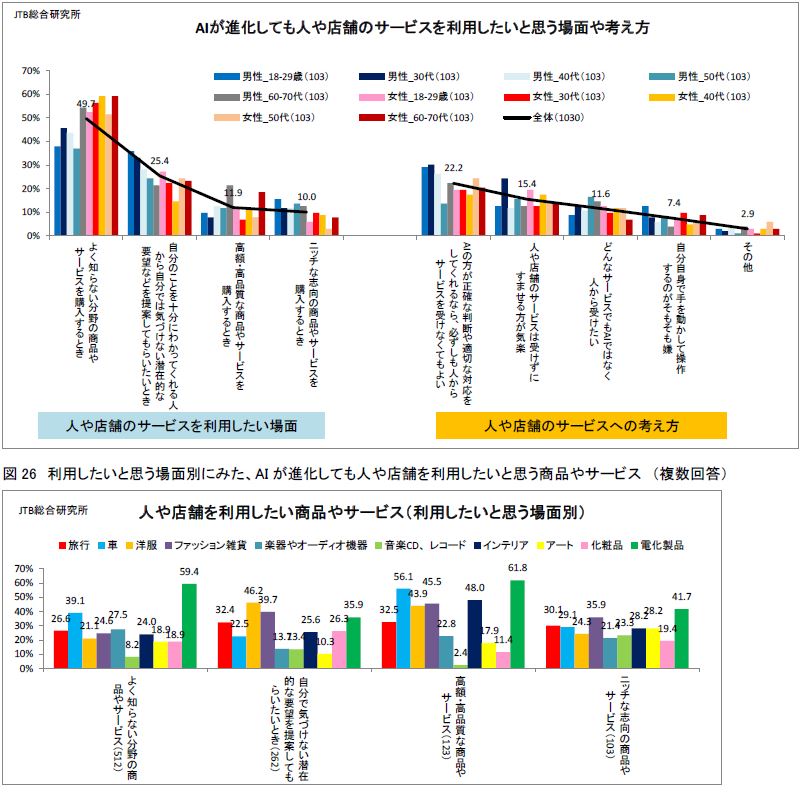
The biggest change of purchase behavior is ‘shopping by other payments than cash (46%).’ The survey results illustrate more online shopping than purchasing at a real shop.
In terms of communication in lifestyle, growths are found in LINE, Messenger or SNS, and at the same time the ratio of real communication increases compared to three years ago.
The most convenient thing to do in digitalization is ‘things I want are delivered to me (58.3%),’ followed by ‘easier to search cheaper things (46%)’ and ‘to use a variety of services without time limitation (36.1%).’
The graph below shows convenient things to do in digitalization:
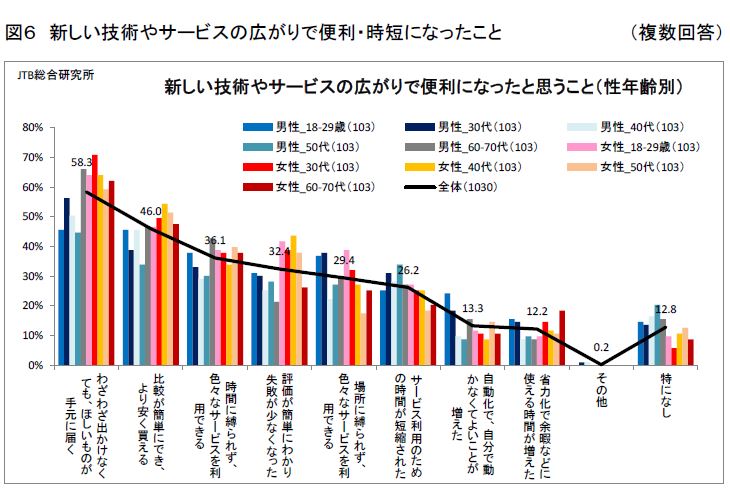
 Travel Voice | Japanese Travel Trade News Japan's No.1
Travel Voice | Japanese Travel Trade News Japan's No.1